Professional
Johannesburg South Tree Felling
Fully Insured
Johannesburg South Tree Felling
Peter B.
Amy R.
Andy C.
Drew A.
Laura M.
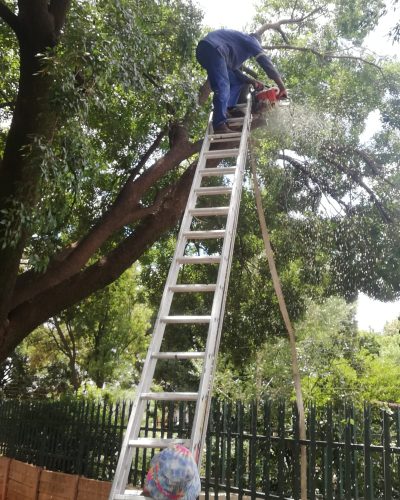
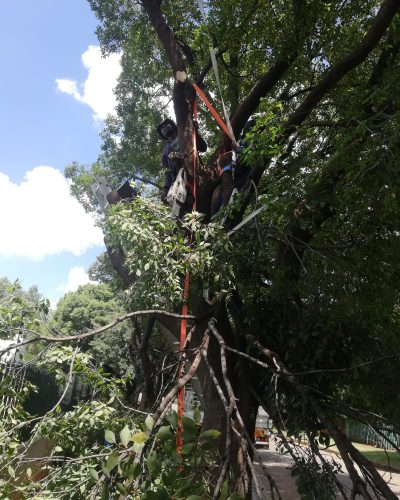
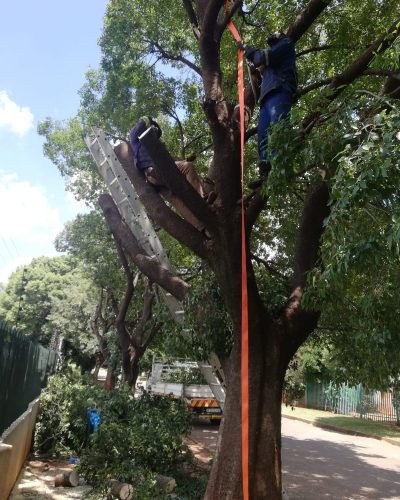
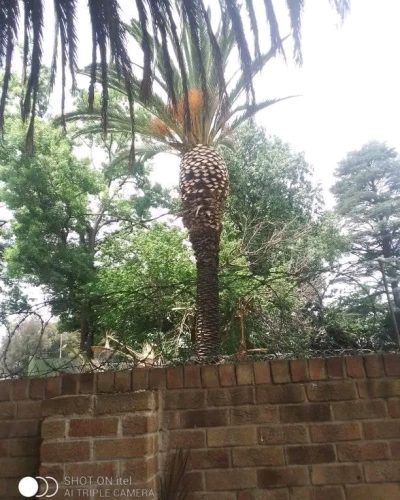
Johannesburg South Tree Felling is a professional tree service company servicing Johannesburg South, offering a variety of services ranging from tree felling, stump removal, and palm tree removal to tree trimming, pruning, and emergency tree removal. With years of experience and a commitment to affordable pricing, this reliable business puts a priority on eco-conscious practices, ensuring that all services are performed with the utmost respect for the environment. Whether dealing with potentially dangerous trees or maintaining the health and aesthetics of your landscape, Johannesburg South Tree Felling provides professional, cost-effective solutions for all your tree-related needs.
- Affordable, Expert Tree Services
- Quick, Reliable Emergency Response
- Professional Stump and Palm Removal
- Precision Tree Trimming and Pruning
We’re Your Trusty Partner in Tree Care!
Don’t let troublesome trees be a headache any longer! Let’s trim, prune, or even remove them. We’re just a call away! Affordable, professional, and eco-friendly. Let’s create a safer, cleaner environment together. Contact Johannesburg South Tree Felling today!
HOW CAN WE HELP
At Johannesburg South Tree Felling, we’re dedicated to providing the best tree services to our valued customers. Whether you’re dealing with an unwanted stump, a messy palm tree, or an unruly tree that needs trimming, we’ve got you covered. We’re not just reliable and professional, but we’re also eco-conscious, ensuring that our services don’t harm the environment. Plus, in case of emergencies, we’re always ready to step in for a quick and efficient tree removal. So, leave all your tree-related worries to us, because we’re here to help!
WHY US
At Johannesburg South Tree Felling, we’re your go-to professionals for all your tree service needs. Whether you’re looking for tree felling, stump removal, palm tree removal, tree trimming and pruning, or emergency tree removal, we’ve got you covered. With our years of experience, we’re able to provide you with high quality service at an affordable price. But it’s not just our reliability and professionalism that sets us apart – we’re also committed to being eco-conscious in all that we do. Choose us, and you’re choosing a company that cares about you and the environment.
FAQS
Question: What’s involved in your tree felling service?
Answer: We’re glad you asked! Our tree felling service involves a careful process of removing trees in a safe and efficient manner. We’re experienced in handling all types of trees, and we take every precaution to prevent any damage to your property.Question: Can you guys remove tree stumps as well?
Answer: Absolutely, we do! We’re equipped with the necessary tools and expertise to remove tree stumps effectively. We’ll grind the stump down until it’s no longer visible, leaving your yard looking neat and tidy.Question: How do you handle palm tree removal?
Answer: Palm tree removal is another one of our specialties. We’ll first assess the situation and then proceed with the safest and most efficient removal method. We’re committed to ensuring minimal disruption to your property.Question: What does your tree trimming and pruning service include?
Answer: Our tree trimming and pruning service includes removing dead or overgrown branches, shaping trees for aesthetic purposes, and promoting healthy tree growth. We’re careful to maintain the natural shape and beauty of your trees.Question: What should we do in case of an emergency tree removal?
Answer: In the case of an emergency, don’t hesitate to give us a call right away. We’re available to provide emergency tree removal services to prevent further damage to your property. We’ll arrive promptly and handle the situation professionally.
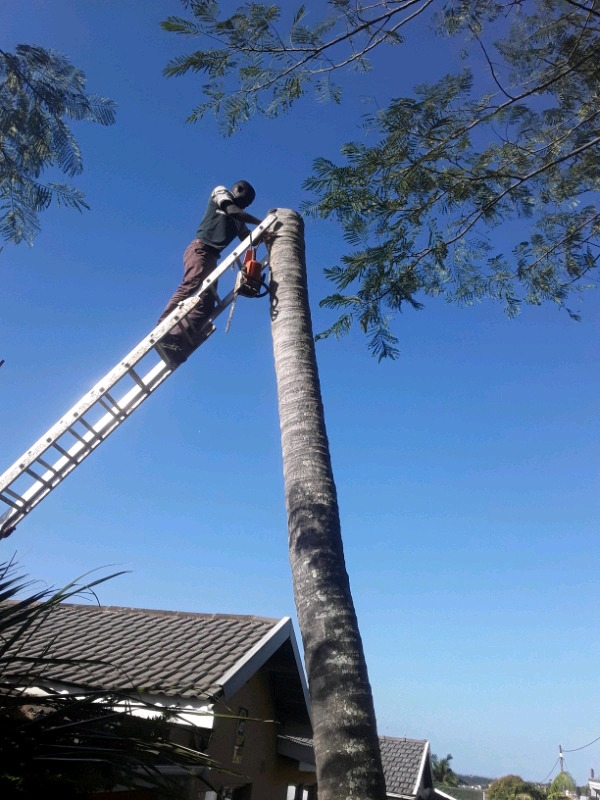
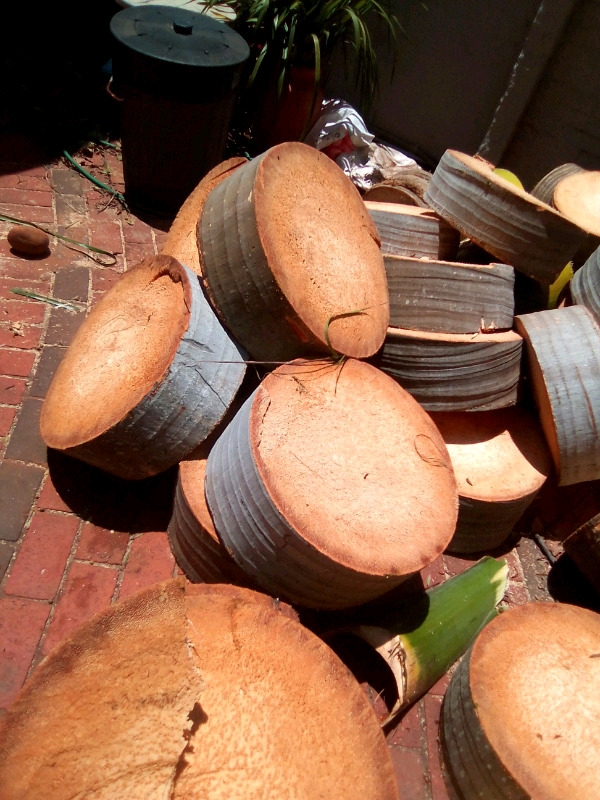
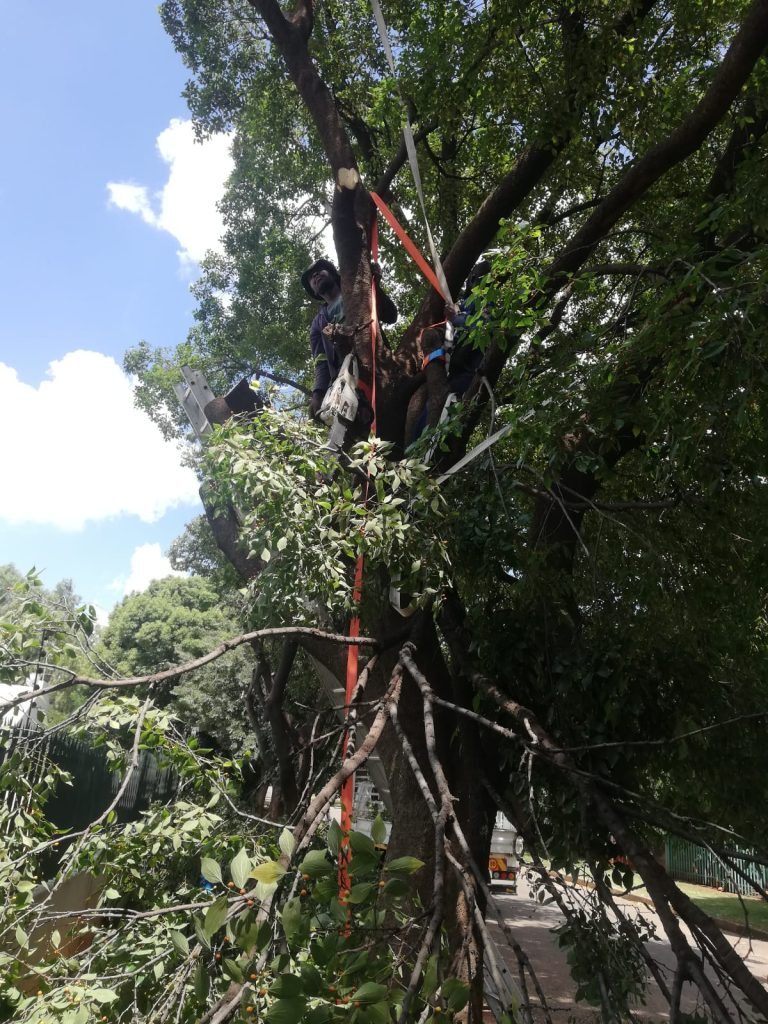
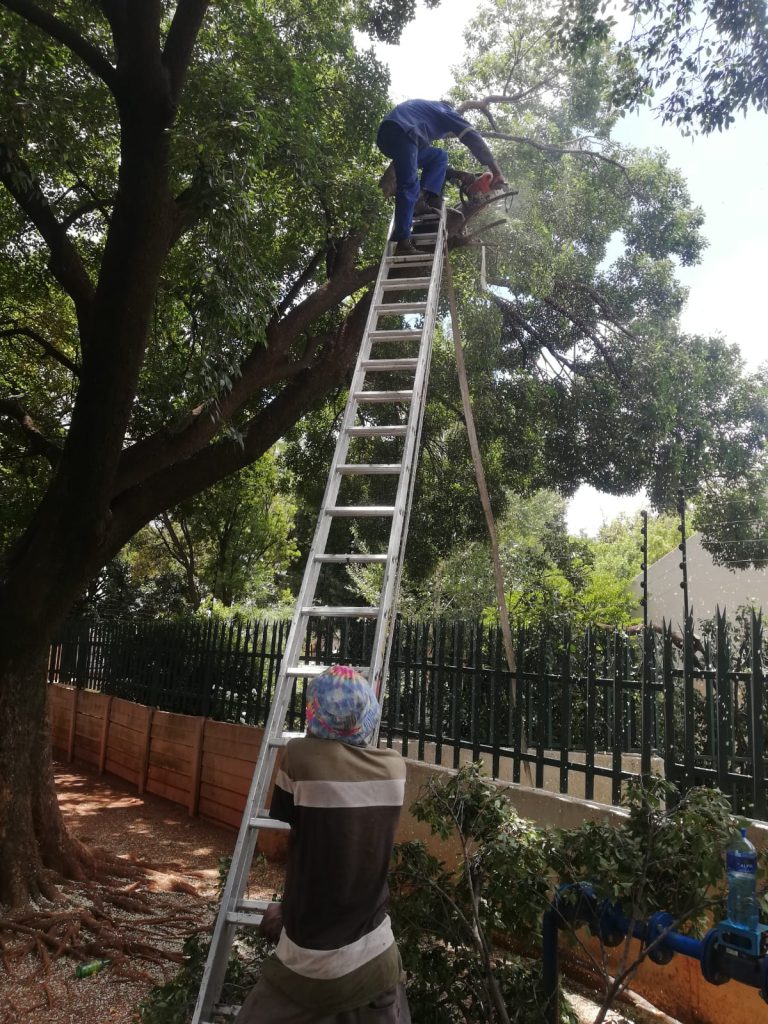
Reliable and Affordable Tree Services with Johannesburg South Tree Felling
We’re Johannesburg South Tree Felling, your trusted partner for all tree-related services in Johannesburg South. We’re not just another tree service company; we’re a team of dedicated professionals who value reliability and affordability. Our range of services includes tree felling, stump removal, palm tree removal, tree trimming and pruning, and emergency tree removal. We’re here to ensure that our local community is safe and beautiful, one tree at a time.
Why wait for a tree-related disaster when you can prevent it? Isn’t it better to have your trees regularly maintained by professionals who know what they’re doing? We think so, and that’s why we’re committed to providing services that are not only of high quality but also affordable. We believe in doing the job right the first time, every time. This is how we’ve built our reputation for reliability.
We understand that every tree and every property is different. That’s why we offer personalised services to suit your specific needs. Whether you need to remove an old stump that’s been an eyesore for years, trim a towering palm tree, or deal with a tree emergency, we’re here to help. And the best part? Our prices won’t break the bank. We’re committed to providing tree services at prices that our community members can afford.
Ensuring Tree Health and Safety: A Comprehensive Guide
When it comes to maintaining the health and safety of the trees in your landscape, it’s more than just a simple trim and prune. We’re talking about a comprehensive approach that involves tree felling, stump removal, palm tree removal, tree trimming and pruning, and emergency tree removal. These aren’t just tasks on a checklist – they’re essential services that keep your trees healthy and your property safe.
Felling a tree is a task that requires a keen eye and steady hand. We don’t just hack away at the trunk – we take a calculated approach. We assess the tree’s size, health, and proximity to structures, then carefully cut it to ensure it falls in the safest direction. Then comes stump removal. Leaving a stump behind can be an eyesore and a tripping hazard. More than that, it can invite pests and diseases. We grind it down to below ground level, leaving your yard looking clean and well-maintained.
But what about palm trees? They’re a different breed entirely. Their tall, slender trunks and frond-filled crowns require a special approach. We don’t just remove them, we do so with care to prevent damage to the surrounding area. And let’s not forget about regular trimming and pruning. This isn’t just about aesthetics – it’s about promoting healthy growth and preventing the spread of disease. In the event of a storm or other emergency, we’re there to safely remove damaged or dangerous trees. It’s all part of how we help keep your trees – and your property – healthy and safe.
Ensuring the Health and Safety of Your Space with Tree Felling, Stump Removal, Palm Tree Removal, Tree Trimming and Pruning, and Emergency Tree Removal
The importance of maintaining our trees cannot be overstated. At Johannesburg South Tree Felling, we’ve seen firsthand the impact a well-cared-for tree can have on a property and the devastating effects a neglected one can cause. Our years of experience in tree felling, stump removal, palm tree removal, tree trimming and pruning, and emergency tree removal have taught us that these services are not just about aesthetics, but also about the health and safety of your space.
As we’re sure you’re aware, trees are living organisms that require regular care and attention. Sometimes, despite our best efforts, trees can become diseased or damaged and pose a risk to people and property. It’s in these instances that tree felling becomes necessary. We recall working with a homeowner whose beautiful old oak tree had unfortunately contracted a severe fungal infection. Despite our best efforts to treat and save the tree, it was deemed too dangerous to remain standing. Our team of experts skillfully took down the tree, ensuring the safety of the home and its occupants. The relief on the homeowner’s face was palpicable, a testament to the importance of professional tree felling.
Stump removal, palm tree removal, tree trimming and pruning, and emergency tree removal are equally essential services. Stumps can attract unwanted pests and diseases, while overgrown palm trees can become a hazard in high winds. Tree trimming and pruning are necessary for the tree’s health, preventing the spread of disease and promoting growth. And when an unexpected storm hits, you’ll be glad to have a professional team on hand for emergency tree removal. We remember one instance where a sudden storm caused a large tree to topple over in a client’s backyard, narrowly missing their home. Our team was on the scene promptly, removing the tree and preventing further damage.
At Johannesburg South Tree Felling, we’re committed to ensuring the health and safety of your trees and your property. Our years of experience have given us the skills and knowledge to handle any situation, no matter how challenging. We understand the importance of our services and we’re proud to offer them to the Johannesburg South community.
Why is Tree Felling, Stump Removal, Palm Tree Removal, Tree Trimming and Pruning, and Emergency Tree Removal so Crucial?
We’ll be the first to admit, taking care of trees isn’t always easy. It’s not just about keeping them looking good; it’s about ensuring they’re healthy and safe too. From tree felling and stump removal to palm tree removal, tree trimming, and pruning, these are all essential services that our team at Johannesburg South Tree Felling provides.
Ever wondered why tree felling is so important? It’s all about safety. We’ve all seen the destruction a fallen tree can cause. It’s not just a potential hazard to property, but to lives too. With our affordable pricing, we’re able to provide this vital service to households and businesses in Johannesburg South, ensuring that any potentially dangerous trees are removed safely and efficiently.
Stump removal, palm tree removal, and tree trimming and pruning are also key to maintaining the health and aesthetics of your outdoor environment. A leftover stump can be an eyesore, but it can also attract pests. And while palm trees are beautiful, they require special care to keep them looking their best. That’s where our team comes in. As for emergency tree removal, well, we hope you never need this service. But if you do, we’re here to help, any time of day or night.
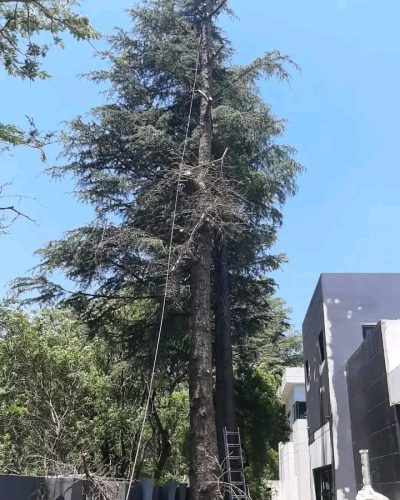
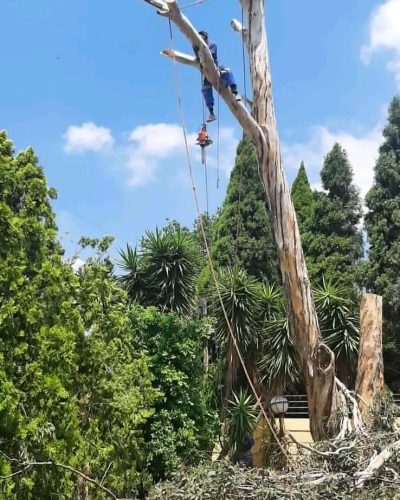
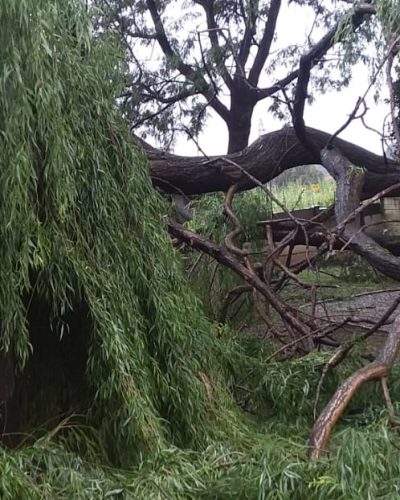
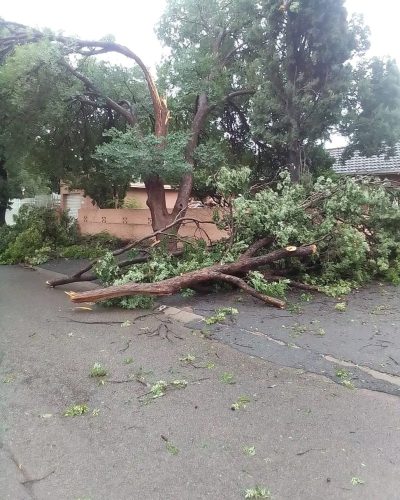
Johannesburg South Tree Felling
79 Macauly Cres, Mondeor, Johannesburg South, 2091
+27 60 038 1659
Company Credentials
- Experience in Tree Felling
- Certifications and Qualifications
- Insurance Coverage
- Safety Standards Compliance
- Local Permits and Regulations Knowledge
- Membership in Professional Associations
- Customer Reviews and Testimonials
- Physical Address and Contact Information
- Availability for Consultation
- Response Time to Inquiries
Service Offerings
- Range of Services (e.g., felling, pruning, stump removal)
- Availability of Emergency Services
- Custom Solutions for Unique Trees
- Use of Modern Equipment and Techniques
- Environmental Conservation Practices
- Cleanup and Disposal Services
- Consultation on Tree Health and Maintenance
- Capability to Handle Different Tree Sizes and Types
- Provision for Aftercare or Follow-up Services
- Landscaping Services Post-Tree Removal
Cost and Billing
- Transparent Pricing Structure
- Free, No-Obligation Quotes
- Payment Terms and Conditions
- Options for Budget-Friendly Services
- Detailed Invoices (breakdown of services)
- Potential for Discounts (e.g., for multiple trees)
- Acceptance of Various Payment Methods
- Provisions for Cost Overruns
- Warranties or Guarantees on Services
- Clarity on Additional Charges (if any)
Safety and Risk Management
- Use of Protective Gear
- Training in First Aid and Emergency Response
- Pre-work Safety Assessments
- Measures to Protect Property and Bystanders
- Equipment Maintenance Records
- Compliance with Local Safety Regulations
- Emergency Preparedness and Response Plans
- Insurance for Property Damage and Worker Injuries
- Protocols for Adverse Weather Conditions
- Risk Management Strategies
Environmental Considerations
- Adherence to Environmental Laws
- Sustainability Practices in Operations
- Tree Conservation and Replacement Strategies
- Minimization of Carbon Footprint
- Waste Reduction and Recycling Measures
- Protection of Wildlife Habitats
- Use of Eco-friendly Equipment and Materials
- Collaboration with Environmental Organizations
- Advice on Native and Invasive Species
- Soil Preservation Techniques
Customer Service and Satisfaction
- Promptness and Reliability of Service
- Professionalism and Courtesy of Staff
- Ease of Scheduling and Flexibility
- Open Communication Channels
- Handling of Complaints and Resolutions
- Post-Service Follow-up
- Transparency and Honesty in Dealings
- Customer Education on Tree Care
- Referral Programs or Loyalty Benefits
- Accessibility for Questions and Concerns
Technical Competence
- Knowledge of Tree Diseases and Treatment
- Skill in Complex Tree Removal Situations
- Efficiency in Service Delivery
- Precision in Pruning and Trimming
- Ability to Manage Large Projects
- Use of Technology for Service Enhancement
- Consistency in Quality of Work
- Understanding of Tree Biology and Physiology
- Expertise in Stump Grinding and Removal
- Familiarity with Local Tree Species
Project Management
- Clear Project Timelines and Deadlines
- Coordination with Other Contractors
- Management of Permits and Paperwork
- Regular Updates and Progress Reports
- Quality Control Measures
- Resource Allocation and Logistics
- Team Leadership and Supervision
- Adaptability to Changes and Delays
- Efficient Use of Resources
- Post-Project Evaluation and Feedback
Additional Considerations
- Recommendations from Neighbors or Friends
- Local Reputation and Community Involvement
- Use of Subcontractors
- Language and Communication Skills
- Personalised Customer Experience
- Portfolio of Previous Projects
- Capacity for Large or Difficult Trees
- Understanding of Property Lines and Boundaries
- Compliance with Noise Regulations
- Respect for Privacy and Property
Decision Making
- Comparison Shopping
- Understanding of Contract Terms
- Clarification of Expectations
- Personal Comfort with the Service Provider
- Species-Specific Regulations: Boksburg might have specific regulations for felling certain tree species, especially indigenous or protected ones.
- Permit Requirements: Unlike general perception, not all trees can be felled without a permit; even on private property, a permit might be necessary.
- Bird Nesting Season: There could be restrictions on tree felling during bird nesting seasons to protect local wildlife.
- Historical Trees: Some trees might be considered historical landmarks and are protected against felling.
- Invasive Species Management: Boksburg may have initiatives to remove invasive tree species, promoting native flora.
- Urban Forest Strategy: The local government might have an urban forest strategy that affects how tree felling is approached.
- Safety Regulations: Specific safety regulations must be followed during tree felling to protect workers and nearby structures.
- Waste Management: Post-felling, there are guidelines on how to dispose of or recycle tree waste.
- Tree Felling as Part of Fire Management: In certain areas, controlled tree felling is part of fire risk management.
- Community Consultation: For significant tree felling projects, community consultation might be required.
- Impact on Local Ecosystem: The impact of tree felling on the local ecosystem, including soil erosion and habitat disruption, is a consideration.
- Weather Conditions: Certain weather conditions may prohibit tree felling activities due to safety concerns.
- Disease Control: Tree felling can be part of disease control measures to prevent the spread of tree diseases.
- Noise Regulations: There might be specific times when tree felling can occur to minimize noise disruption.
- Expert Assessment: A certified arborist’s assessment may be required before a tree can be felled.
- Tree Replacement: Local regulations may require the planting of new trees as compensation for those felled.
- Educational Programs: There could be educational programs on the importance of trees and the regulations around tree felling.
- Technology in Tree Felling: Advances in technology may influence the methods used for tree felling in Boksburg.
- Impact on Property Values: The presence or removal of trees can significantly impact property values.
- Community Greening Projects: Tree felling might be integrated into broader community greening projects.
- Lack of Proper Licensing: Hiring an unlicensed contractor can lead to legal and safety issues.
- Insufficient Insurance: Without adequate insurance, any accidents or damages may become the homeowner’s liability.
- Inadequate Safety Measures: Poor safety practices can endanger workers and bystanders.
- Untrained Workers: Inexperienced workers may not perform the job safely and effectively.
- Damage to Property: Incorrect felling techniques can cause tree damage to homes, vehicles, or other structures.
- Environmental Harm: Improper felling can disrupt local ecosystems and wildlife habitats.
- Legal Penalties: Felling trees without necessary permits can result in fines or legal action.
- Overcharging: Without comparing quotes, you may end up paying more than necessary.
- Underquoting: Unscrupulously low quotes may lead to poor quality work or additional hidden costs.
- Poor Communication: Misunderstandings about the scope of work can lead to unsatisfactory outcomes.
- Incomplete Jobs: Some services might leave the job unfinished, with stumps or debris not removed.
- Delayed Service: Lack of punctuality can disrupt your schedule and delay other related projects.
- Damage to Underground Utilities: Felling without checking for underground lines can cause utility disruptions and hazards.
- Not Adhering to Local Regulations: Ignorance of local tree felling regulations can have legal repercussions.
- Ignoring Tree Health Assessments: Removing trees that could be saved with proper treatment harms the environment and wastes resources.
- Use of Inappropriate Equipment: Incorrect or faulty equipment can lead to accidents or inefficiency.
- Disruption to Neighbors: Failing to notify neighbors can lead to disputes or complaints.
- Soil Compaction: Heavy machinery can damage your garden or lawn.
- Root Damage to Other Trees: Incautious felling can harm the roots of surrounding trees.
- Invasive Species Spread: Not properly disposing of tree waste can spread diseases or invasive species.
- Neglecting Wildlife: Failing to check for nests or habitats can harm local wildlife.
- High Climbing Risks: Inadequate safety gear for climbers can lead to falls or injuries.
- Failure to Secure Necessary Permissions: Not getting consent from local authorities or homeowner associations can lead to legal troubles.
- Misidentification of Trees: Incorrectly identifying the tree species can lead to improper felling techniques or unnecessary removal.
- Lack of a Written Contract: Without a clear contract, scope, and costs can become contentious issues.
- Poor Reputation: Not researching the company’s reputation could mean hiring unreliable services.
- Damage to Pavements or Roads: Heavy machinery can cause damage to public or private roads.
- Ignorance of Tree Preservation Orders: Some trees are protected and cannot be felled without specific permission.
- Misunderstanding of the Job’s Complexity: Underestimating the job can lead to inadequate preparation and risks.
- Inadequate Post-Felling Cleanup: Leaving behind debris or sawdust can be unsightly and hazardous.
- Failure to Follow Through with Stump Removal: Neglecting to remove the stump can attract pests or be a tripping hazard.
- Risk of Falling Limbs: Incorrect cutting techniques can lead to unpredictable falling of branches.
- Not Using Personal Protective Equipment (PPE): Lack of PPE increases the risk of injury.
- Failure to Provide a Detailed Quote: Vague quotes can lead to disputes over what was included in the price.
- Using a One-size-fits-all Approach: Not tailoring the method to the specific tree and location can lead to poor outcomes.
- Lack of References: Not being able to provide past customer references may indicate a lack of experience or poor service.
- Ignoring Seasonal Considerations: Felling trees at the wrong time of year can affect wildlife or the health of remaining trees.
- Not Planning the Felling Direction Properly: This can lead to the tree falling in an unintended direction.
- Failure to Assess the Tree’s Health Properly: Removing a tree that could have been saved or not identifying a hazardous tree can have dire consequences.
- Lack of Emergency Plans: Without plans for potential accidents, response times can be delayed.
- Damage to Fencing or Other Boundary Features: Carelessness can lead to unnecessary repair costs.
- Tree Trimming Instead of Felling: Miscommunication or misjudgment may result in partial work that doesn’t meet the client’s needs.
- Not Securing the Area: Failure to secure the work area can endanger passersby or property.
- Inefficient Debris Disposal: Inadequate or improper disposal methods can lead to additional costs or environmental harm.
- Failure to Replant: Not offering or discussing replanting options misses the opportunity to maintain local greenery.
- Not Acknowledging Tree Sentimental Value: Ignoring the emotional impact of tree removal on clients can lead to dissatisfaction.
- Ignoring the Need for Soil Rehabilitation: Removing a tree can impact soil health, which needs addressing for future planting.
- Unwillingness to Handle Complex Projects: Some services might refuse or inadequately handle difficult tasks, like trees close to buildings.
- Not Offering a Range of Services: A service limited to just felling might not meet all your tree management needs.
- Lack of Flexibility in Scheduling: Inflexible scheduling can make it difficult to coordinate the tree felling with your availability.
- Failure to Use Sustainable Practices: Not considering the environmental impact of their methods can contribute to broader ecological issues.
- Ignoring Client Instructions: Not adhering to specific client requests can lead to unsatisfactory outcomes.
- Lack of Aftercare Advice: Providing no guidance on caring for the area post-felling can lead to problems with regrowth or soil health.
- Excessive Noise Pollution: Not managing the noise associated with tree felling can disturb the community.
- Dust and Particulate Matter: The process can generate significant dust, affecting air quality and cleanliness of nearby spaces.
- Not Monitoring the Health of Adjacent Trees: Nearby trees could be affected by diseases or pests from the felled tree if not properly managed.
- Poor Timing with Weather Conditions: Felling trees in unsuitable weather can increase risks and complications.
- Lack of a Clear Felling Strategy: Without a strategic approach, the process can be inefficient or unsafe.
- Failure to Provide a Safety Briefing: Not briefing clients and workers on safety measures can lead to accidents.
- Not Respecting Local Culture or Beliefs: In some areas, trees may have cultural significance that needs to be considered.
- Underestimating the Impact on Local Fauna: Removing trees without considering the wildlife depending on them can harm biodiversity.
- Not Offering Stump Grinding Options: Leaving clients without a complete solution for stump removal can be unsatisfactory.
- Creating Water Runoff Issues: Tree removal can affect drainage and lead to water management issues.
- Risk of Pest Infestation from Leftover Stumps: Stumps can attract pests if not properly treated or removed.
- Not Considering the Aesthetic Impact: Removing trees without considering the landscape’s visual balance can detract from property appeal.
- Lack of Transparency in Pricing: Hidden fees or charges can lead to mistrust and dissatisfaction.
- Ignoring Tree’s Historical Significance: Felling a tree with historical importance can lead to community backlash.
- Failure to Address Client Concerns: Not taking client worries seriously can result in a breakdown of trust.
- Not Being Equipped for Emergency Situations: Lack of preparedness for unexpected situations can exacerbate hazards.
- Inadequate Risk Assessment: Failing to properly assess and communicate risks can lead to unsafe working conditions.
- Not Utilizing Modern Techniques: Sticking to outdated methods can reduce efficiency and safety.
- Lack of Knowledge on Local Flora: Inadequate understanding of local tree species and their management needs can lead to poor advice or service.
- Failure to Coordinate with Local Authorities: Not liaising with local government or utility companies can cause disruptions.
- Not Providing Sufficient Training to Employees: Untrained staff can lead to operational inefficiencies and increased risks.
- Lack of Customer Support: Poor post-service customer support can leave clients with unresolved issues or questions.
- Not Following Industry Best Practices: Deviating from established best practices can lead to substandard work and safety issues.
- Using Harmful Chemicals: Employing chemicals without considering their environmental impact can cause damage.
- Not Offering Custom Solutions: A one-size-fits-all approach may not suit every situation, leading to ineffective results.
- Failure to Respect Private Property: Trespassing on or damaging neighboring properties can lead to legal issues.
- Not Being Prepared for Vehicular Access Issues: Inadequate planning for access can hinder the operation and safety.
- Mismanagement of Time: Poor time management can extend the duration of the project unnecessarily.
- Lack of Environmental Awareness: Not considering the broader environmental impact can contribute to negative outcomes.
- Overlooking the Importance of Tree Conservation: Not advising on or considering tree conservation options can lead to unnecessary removals.
Seasonal Variations: Tree felling activities in South Africa may vary seasonally, influenced by weather conditions.
Impact on Soil: Tree felling can have significant effects on soil quality and erosion.
Water Conservation: The industry is connected to water conservation efforts, as trees play a crucial role in the water cycle.
Urban Heat Island Effect: In urban areas, tree felling can impact the urban heat island effect.
Noise Pollution: Tree felling activities contribute to noise pollution, especially in urban areas.
Air Quality: Trees affect air quality, so their removal has implications for urban and rural environments.
Recreational Spaces: Tree felling in recreational areas like parks is often controversial and heavily regulated.
Public Awareness and Education: There’s an ongoing need for public awareness and education about sustainable tree felling.
Community Forests: Community-managed forests play a role in sustainable tree felling practices.
Fire Risk Management: Tree felling is a tool in managing fire risk, especially in fire-prone areas.
Invasive Species Control: Removing invasive tree species is a part of environmental management.
Wildlife Habitats: Tree felling can impact habitats of various wildlife species.
Carbon Footprint: The industry’s carbon footprint is a subject of study and management.
Energy Production: Some felled trees are used for biomass energy production.
Cultural Significance: Certain trees have cultural significance and are protected from felling.
Legislation Changes: The tree felling regulations and laws in South Africa are subject to change and updates.
Public Consultations: For significant tree felling projects, public consultations are often required.
Disease Management: Trees are sometimes felled to control the spread of diseases.
Pest Control: Pest infestations can necessitate tree felling.
Tourism Impact: Tree felling can impact tourism, especially in scenic or natural areas.
Tree Planting Initiatives: Tree planting initiatives often accompany large-scale tree felling projects.
Legal Disputes: The industry sometimes faces legal disputes over unauthorized or controversial tree felling.
Insurance Claims: Tree felling is sometimes related to insurance claims, especially in urban areas.
Municipal Regulations: Local municipalities have their own regulations and policies regarding tree felling.
Tree Felling as a Service: Tree felling is a common service offered by landscaping and gardening businesses.
Equipment and Machinery: The industry uses a range of specialized equipment and machinery.
Maintenance of Equipment: Regular maintenance of felling equipment is essential for safety and efficiency.
Fuel Consumption: Machinery used in tree felling consumes significant amounts of fuel.
Waste Management: Managing waste from tree felling is a critical aspect of the industry.
Product Certification: Wood products from tree felling can be certified for sustainability.
Supply Chain: The tree felling industry is part of a larger supply chain, including transportation and processing.
International Standards: South African tree felling practices are sometimes influenced by international standards and practices.
Market Demand: The demand for wood products influences tree felling rates and practices.
Technology in Tree Felling: Advancements in technology impact how tree felling is conducted.
Remote Sensing: Remote sensing technologies are used to monitor and manage forest areas.
GIS in Forestry: Geographic Information Systems (GIS) are used for planning and managing tree felling activities.
Drone Usage: Drones are increasingly used for surveying and monitoring forests.
Tree Felling Accidents: Safety concerns include accidents and injuries associated with tree felling.
First Aid Training: Tree fellers often receive first aid training as part of their job.
Emergency Response Plans: Companies have emergency response plans for accidents during tree felling.
Veteran Trees: Special care is taken when dealing with old, veteran trees.
Tree Preservation Orders: Certain trees are protected by tree preservation orders.
Urban Forestry: Urban forestry involves careful planning of tree felling and planting in cities.
Landscape Impact: Tree felling can significantly alter landscapes.
Ecotourism: Ecotourism can be impacted by tree felling activities.
Tree Felling Competitions: There are competitions and skill demonstrations in the field of tree felling.
Climate Adaptation: The industry is adapting to the changing climate and its impacts on forestry.
Forestry Education: There are educational programs and courses dedicated to forestry and tree felling.
Research and Development: Ongoing research in forestry impacts tree felling techniques and policies.
Conservation Projects: Tree felling is sometimes part of larger conservation projects.
Ecosystem Services: Trees provide various ecosystem services, which are considered in tree management.
Stakeholder Engagement: Engaging different stakeholders is important in planning large tree felling operations.
Arboriculture: Arboriculture, the study of trees, is closely related to tree felling practices.
Tree Age Assessment: Assessing the age of trees is important in deciding which trees to fell.
Root Protection: Protecting the roots of nearby trees is a concern during felling operations.
Felling Permissions: Permissions are required from landowners and authorities for tree felling.
Biodiversity Offsets: Biodiversity offsets can be part of tree felling projects.
Green Belts: Tree felling in green belts is often restricted and heavily regulated.
Tree Surveys: Tree surveys are conducted to assess the health and status of trees before felling.
Public Parks Management: Tree felling in public parks requires careful planning and public communication.
Tree Disease Surveys: Regular surveys are conducted to monitor tree diseases.
Environmental Impact Assessments: Environmental impact assessments are mandatory for large tree felling projects.
Logging Roads: The construction of logging roads is an essential part of tree felling operations.
Tree Replacement Ratios: There are often requirements for tree replacement ratios after felling.
Light Penetration: Tree felling can increase light penetration to the ground, affecting undergrowth.
Soil Fertility: Tree felling can impact soil fertility.
Habitat Fragmentation: Large scale tree felling can lead to habitat fragmentation.
Indigenous Knowledge: Indigenous knowledge and practices are sometimes integrated into tree felling practices.
Certified Tree Fellers: There’s an emphasis on using certified tree fellers for responsible tree management.
Customer Education: Educating customers about sustainable tree felling is part of the service.
Tree Health Monitoring: Continuous monitoring of tree health is crucial for sustainable forest management.
Collaboration with NGOs: Tree felling companies often collaborate with NGOs for sustainable practices.
Tree Felling Permits: Permits are a crucial part of the legal process in tree felling.
Wildlife Corridors: Maintaining wildlife corridors is a consideration in large-scale tree felling.
Forestry Conferences: Regular conferences and seminars are held to discuss advances and challenges in the industry.
Community Forest Management: In some regions, tree felling is managed by local communities to ensure sustainable practices.
Impact on Indigenous Peoples: The rights and lands of indigenous peoples are considered in tree felling operations.
Tree Felling as a Craft: Traditional tree felling methods are still practiced as a craft in some areas.
Climatic Influence on Growth Rates: The varied climate of South Africa influences the growth rates of different tree species.
Forestry Education Scholarships: Scholarships are often available for students pursuing forestry education.
Wood Recycling and Reuse: Emphasis on recycling and reusing wood from tree felling to promote sustainability.
Tree Felling and Urban Development: Tree felling is often a contentious issue in urban development projects.
Impact on Soil Microorganisms: Tree felling can affect the biodiversity of soil microorganisms.
Bird Habitat Preservation: Special considerations are made to protect bird habitats during tree felling.
Tree Felling and Flood Control: Strategic tree felling can be used in flood control and management.
Agroforestry Practices: Incorporation of tree felling within agroforestry practices for sustainable land use.
Role in Carbon Trading: The tree felling industry plays a role in carbon trading schemes.
Tree Felling and Honey Production: Impact on honey production, as bees rely on certain trees for nectar.
Orchard Renewal: Tree felling is part of the renewal process in fruit orchards.
Sawmilling Industry: The sawmilling industry is closely linked with tree felling activities.
Tree Felling and Windbreaks: Trees are strategically felled to create or maintain windbreaks for agricultural lands.
Heritage Trees: Special policies exist for the protection of heritage trees.
Tree Felling in Coastal Areas: Specific considerations for tree felling in coastal areas, affecting dune stabilization.
Impact on Microclimates: Tree felling can alter local microclimates.
Wood Carving Industry: The wood carving industry benefits from the availability of wood through tree felling.
Forestry Extension Services: Extension services provide support and education to tree fellers and landowners.
Tree Felling and Land Restoration: Tree felling is sometimes part of land restoration projects.
Use in Traditional Medicine: Some trees are felled for their use in traditional South African medicine.
Tree Felling in Mining Areas: Tree felling is also associated with land clearing for mining activities.
Impact on Local Economies: Tree felling operations can have significant impacts on local economies, particularly in rural areas.
[geocentric_weather id=”b79dfeed-801d-4f04-879d-e560ac780eb1″]
[geocentric_about id=”b79dfeed-801d-4f04-879d-e560ac780eb1″]
[geocentric_neighborhoods id=”b79dfeed-801d-4f04-879d-e560ac780eb1″]
[geocentric_thingstodo id=”b79dfeed-801d-4f04-879d-e560ac780eb1″]
[geocentric_busstops id=”b79dfeed-801d-4f04-879d-e560ac780eb1″]
[geocentric_mapembed id=”b79dfeed-801d-4f04-879d-e560ac780eb1″]
[geocentric_drivingdirections id=”b79dfeed-801d-4f04-879d-e560ac780eb1″]
[geocentric_reviews id=”b79dfeed-801d-4f04-879d-e560ac780eb1″]


